Plants
-
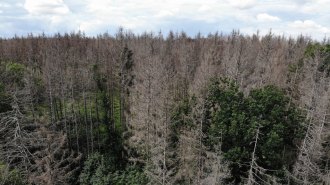 Plants
PlantsTrees ‘remember’ times of water abundance and scarcity
Spruce trees that experienced long-term droughts were more resistant to future ones, while pines acclimatized to wet periods were more vulnerable.
-
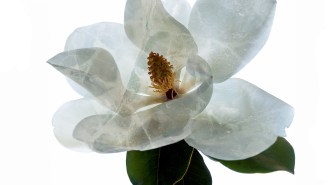 Plants
PlantsCryopreservation is not sci-fi. It may save plants from extinction
Not all plants can be stored in a seed bank. Cryopreservation offers an alternative, but critics question whether this form of conservation will work.
By Sujata Gupta -
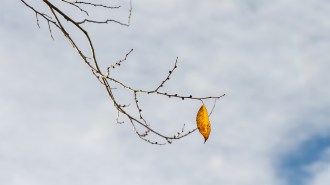 Plants
PlantsA leaf’s geometry determines whether it falls far from its tree
Shape and symmetry help determine where a leaf lands — and if the tree it came from can recoup the leaf’s carbon as it decomposes.
-
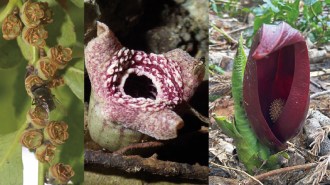 Plants
PlantsPutrid plants can reek of hot rotting flesh with one evolutionary trick
Some stinky plants independently evolved an enzyme to take the same molecule behind our bad breath and turn it into the smell of rotting flesh.
-
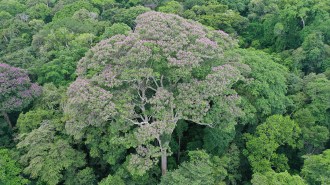 Plants
PlantsSome tropical trees act as lightning rods to fend off rivals
Though being struck by lightning is usually bad, the tropical tree Dipteryx oleifera benefits. A strike kills other nearby trees and parasitic vines.
-
 Plants
PlantsWatch live plant cells build their cell walls
Imaging wall-less plant cells every six minutes for 24 hours revealed how the cells build their protective barriers.
-
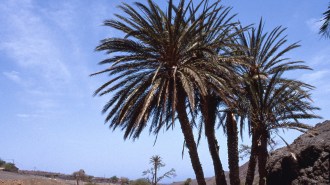 Plants
PlantsA nearly century-old dead date palm tree helped solve an ancestry mystery
The iconic Cape Verde date palm came from commercial trees gone feral and could provide genetic variety to boost the resilience of its tamer relatives.
By Susan Milius -
 Agriculture
AgricultureHow silicon turns tomato plants into mean, green, pest-killing machines
Treated plants fight pests without the need for toxic pesticides, oozing a "larval toffee" that stunts tomato pinworms’ growth and attracts predators.
-
 Climate
ClimateSome trees are coping with extreme heat surprisingly well
Rising temperatures could reduce trees' ability to photosynthesize. Scientists are trying to figure out just how close we are to that point.
-
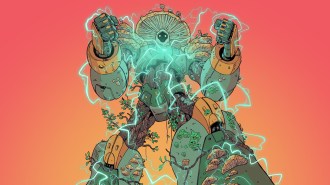 Tech
TechRobots are gaining new capabilities thanks to plants and fungi
Biohybrid robots made with plant and fungal tissue are more sensitive to their surroundings.
-
 Plants
PlantsA bacteria-based Band-Aid helps plants heal their wounds
Recent research into bacterial cellulose patches may speed plants' recovery, improve grafting and help with preservation.
-
 Life
LifeA new book explores the evolutionary romance between plants and animals
Riley Black’s new book, When the Earth was Green, uses the latest research to envision the ancient worlds of our favorite prehistoric animals.